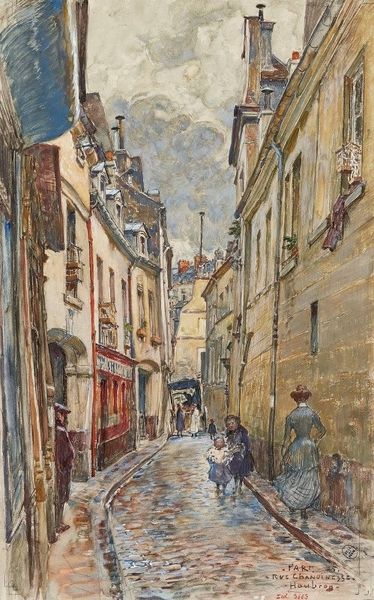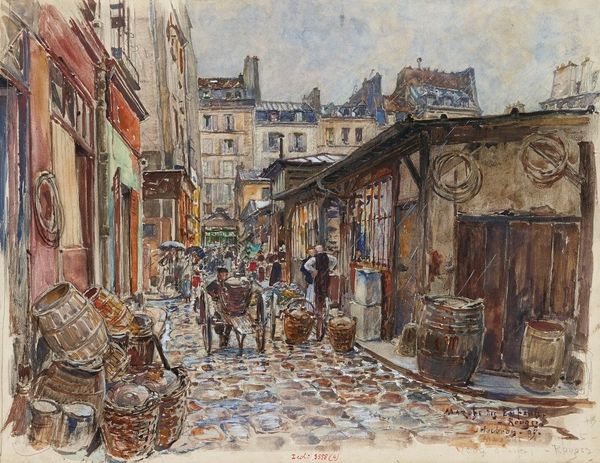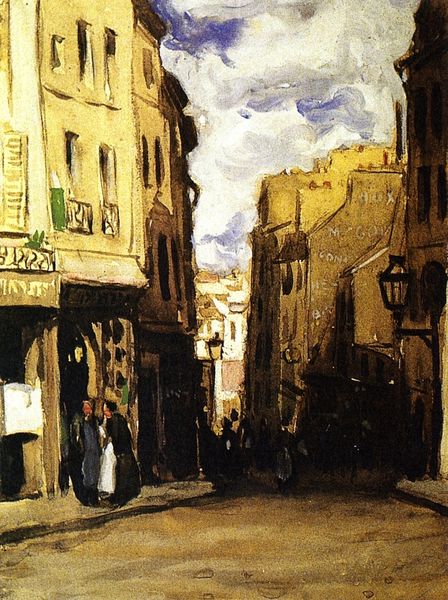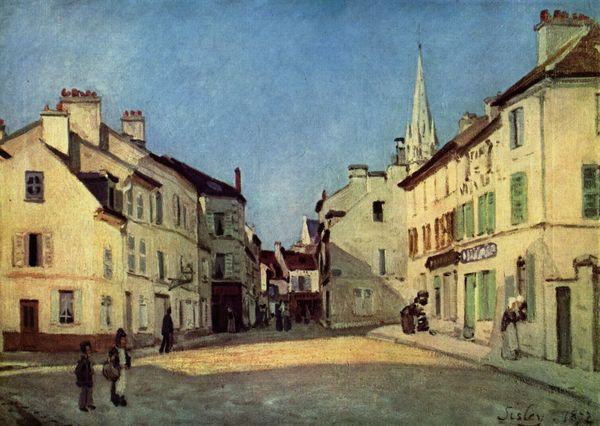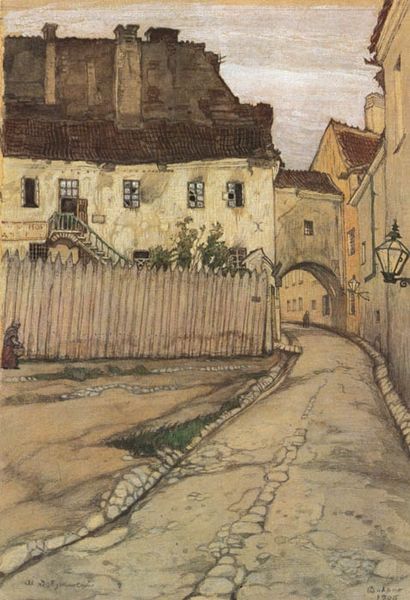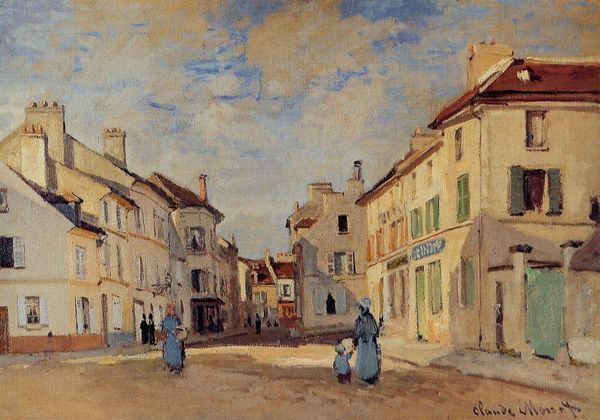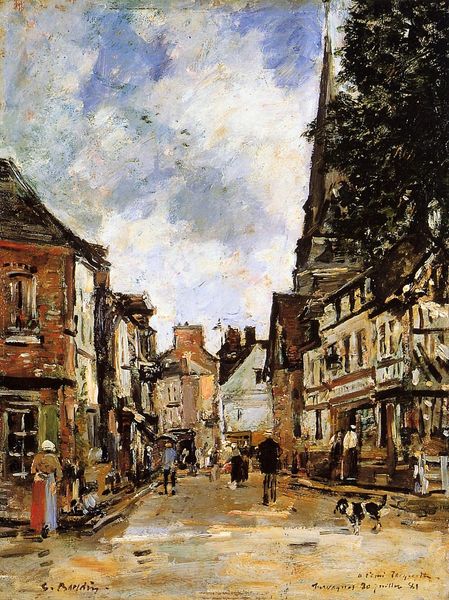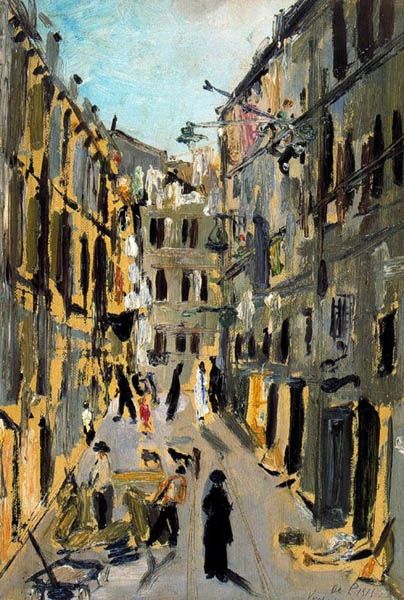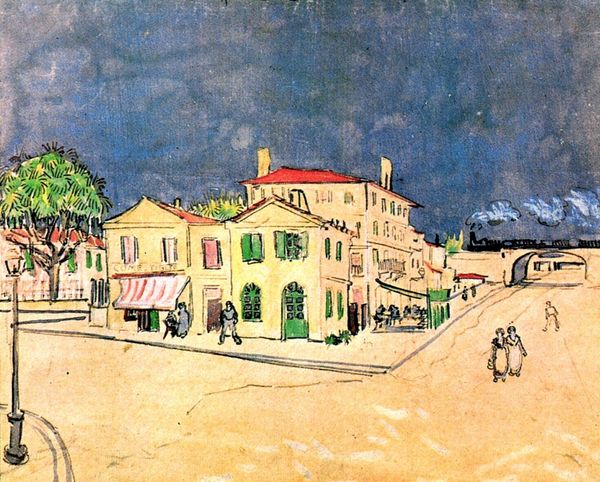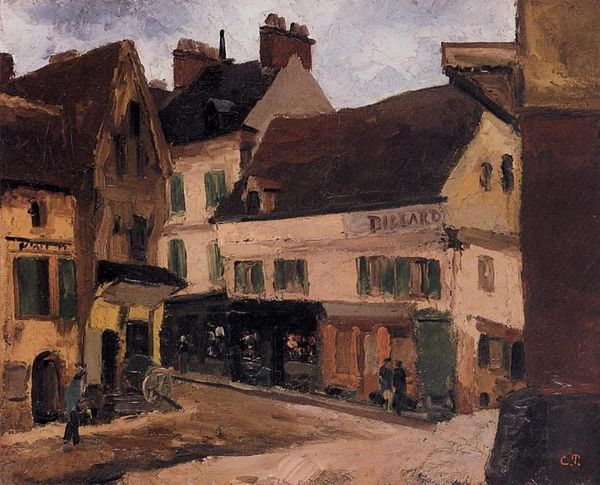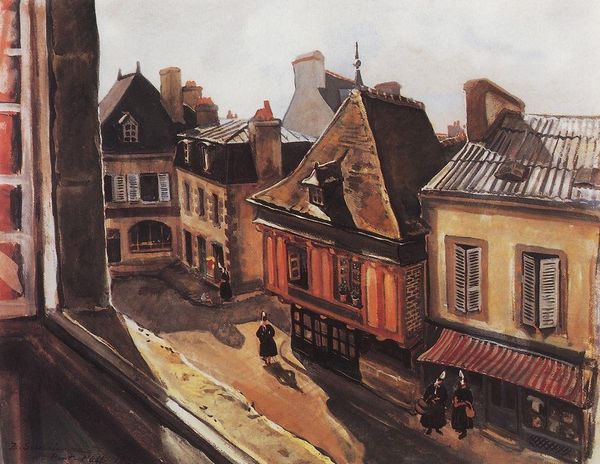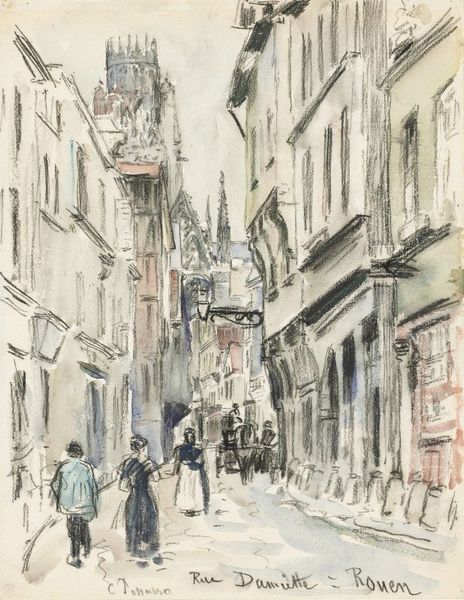
Copyright: Public domain US
Curator: This is Mstislav Dobuzhinsky’s “Arch on the street Yatkovaya,” created in 1906. It's a watercolor painting currently housed here at the Tretyakov Gallery in Moscow. Editor: It feels so closed in, yet light. The colors are muted but give warmth to the whole streetscape. Almost like a stage set, with the arch acting as the proscenium. Curator: The appeal lies in Dobuzhinsky's rendering of urban space through simplified forms and a keen attention to the interplay of light and shadow. The application of watercolor is fascinating – loose washes creating a sense of atmosphere contrasted with more deliberate strokes defining the architectural details. He builds a visual world out of seemingly mundane materials. Editor: Mundane perhaps, but not without a deep sense of history. This is 1906 Russia, a period of immense social upheaval and growing revolutionary fervor. A scene like this, so ordinary on the surface, becomes infused with a subtle tension. Are we meant to see this arch as a barrier, or a gateway? How does it define the roles and possibilities available for all people in the community who walk through this daily? Curator: Well, speaking of barriers or gateways, you see how the surface and structure speak of building codes. What I find intriguing about Dobuzhinsky's choice of medium, watercolour, it's about access; inexpensive and portable compared to oils, and the accessibility it affords both the artist and the viewers in documenting and appreciating such a space. Editor: And within that accessibility, consider who it further marginalizes. Think about how gender and class shape our experience of public and private space, especially during this historical moment when ideas around womanhood and domesticity were very much a central discussion for both traditionalist and revolutionary mindsets alike. This composition reflects and even perpetuates inequalities and constraints faced in daily life. Curator: These very constraints perhaps shape the possibilities he then faced when documenting such quotidian existence through watercolors as a medium. Dobuzhinsky's materials are indeed part of the social reality. Editor: Absolutely. A dialogue, then, between materiality and historical narrative—two threads forever entwined. Curator: Precisely. It makes you think differently about urban environments of the past. Editor: Yes, art can allow us a portal to reconsider.
Comments
No comments
Be the first to comment and join the conversation on the ultimate creative platform.
